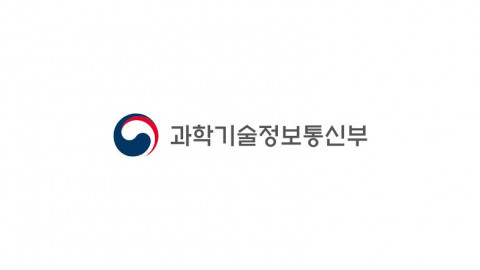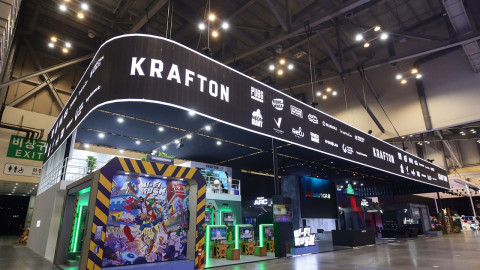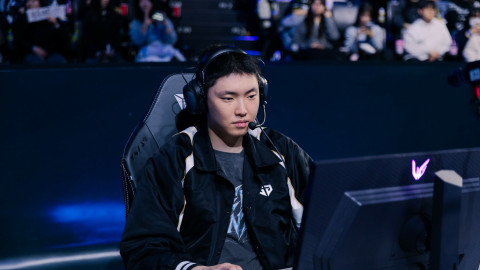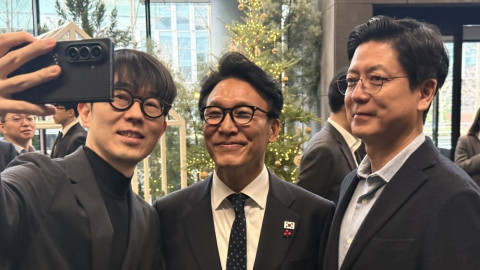The Korean people were asking for more.
Better production, with professional shoutcasters that could entertain the audience and give in-depth analysis at the same time. A larger prize pool, enough to fully entice the talented amateurs hesitant to commit. And a massive stage, on which famous teams around the globe could collide.
And so came forth Overwatch APEX.

As soon as APEX opened its doors, a total of 1,531 people from 230 teams signed up. Christopher “MonteCristo” Mykles mentioned in his opening greeting that it was "the largest qualifier for any tournament in OGN history" dating back to StarCraft: Brood War. Some participating teams had years of experience in eSports, but there were also many that were formed just before the deadline, such as the solo queue cobbleup BK Stars.
64 teams advanced from the online qualifiers to the offline qualifiers; from them, only 12 would compete at OGN's eStadium against the four giants from the West. The offline qualifiers saw big names such as LW Red and EHOME kneel to complete newcomers, and the shocking results further fueled a controversy that had been raging even before the qualifiers begun.
In order to maintain an environment "fair for everyone," 144Hz monitors were prohibited in the qualifiers. All players were forced to play in 60Hz. There was a considerable impact on the players' mechanics, and the competitive integrity of the qualifiers fell under fire. ArHaN and TaiRong also pointed this out in their interview with us: ArHaN said that his accuracy was almost halved, and TaiRong had to adjust the team's strategy because Genji was harder to shut down in 60Hz. OGN posted an explanation regarding the issue, but it took a while for the issue to settle down.
Amidst the noise, still, the tournament started whirring into motion.

Overwatch APEX began with a heavy bias against Korean players. Even among Korean fans, there was an underlying assumption that Korea still had to go a long way to match up against the West in FPS. When APEX decided to invite four of the best Western teams to compete with Koreans, many expected the home boys to fight an uphill battle.
Teams like Lunatic-Hai and Afreeca Freecs Blue (then MiG Frost) did put out strong showings in international tournaments like APAC Premier and the Nexus Cup, but those all happened outside of Korean borders.

Inspiring talents spread their names across borders
Despite being an underdog in between famous teams like Lunatic-Hai and REUNITED, BK Stars and KongDoo Uncia made it to the semifinals with solid teamwork and successful adaption to the changing meta. New superstars like Bunny emerged. Young Korean talent was being recognized by fans on the other side of the globe. APEX was showing what international tournaments are all about: bringing down borders and cranking up competition to, in all, enrich the pro scene.

Overwatch APEX Tournament's international environment also gave Korean fans a chance to see talent they were not well aware of. REUNITED's support player Kruise acquired a sizable fandom in Korea, inviting many Korean fans to his resonatingly lighthearted Twitch stream, often shouting "Jumo!" in broken Korean, which many fans found to be entertaining.
Kruise told us that he was astonished by Korea's Overwatch fans, saying that their enthusiasm was “on a whole new level”. He also said that he will miss playing on the Korean server, as he found it to be better than the NA or EU servers.
Refined, yet capable of reaching further
APEX saw its teams' game knowledge deepen, then widen, as the event progressed. Blizzard kept releasing unfiltered patches directly onto the tournament; players were forced to come up with new ideas in limited amounts of time.
While such patches, according to MonteCristo, undermine "the competitive integrity of the tournament", it also pushed teams to come up new strategies and roll creatively. The players and coaches had a hard time, but a good number of viewers were happy to see the pros play on live.
The observing system has also shown much improvement, but a lot of fans still want the viewing experience to be better. Overwatch is, after all, a fast-paced hybrid FPS with constant action going on, and it definitely requires more attention than LoL to keep up with. The camera cycling in between players makes it harder to see what is happening macro-wise, and it is hard to get rid of the feeling that the red-colored team is the enemy, especially if you play the game frequently.
Flashbacks, quality shoutcasting, and timely camerawork by observers have been successfully covering the system's flaws. Switching to helicam view to cover choke points, and walking through a rather confusing teamfight once again through replays, have been great ideas. However, I think Overwatch can push further so that more people can comfortably watch the game.

"I do think that the spectator client still needs a lot of work. It needs to have a minimap, needs to make sure team particles are different colors and consistently different colors. Maybe teams can have their own colors that are consistent throughout the entire tournament, which would be really nice. Health bars that we can actually see all the time would also be extremely helpful."
Season 1 and beyond
Overwatch stepped into the industry as a hybrid eSport, with MOBA elements blended into FPS. Constant teamfights. Unrelenting attacks. Skillshots flying around everywhere. It's definitely something spectacular. But Blizzard needs to do their homework on how they can refine this brand-new eSport so that it can maximize the game's potential to succeed. Competitive Overwatch's numerous issues will hopefully be ironed out as time goes by and more trials and errors are made.
What ultimately takes a competitive eSport from interesting to thrilling, however, is the level of play. Individual brilliance, coming together as a team.

An East vs West showdown in the finals is probably what most Overwatch fans have been waiting for since APEX announced the invitation of Western teams.
EnVyUs was already popular in Korea even before domestic tournaments began to take place; their reputation preceded them. Although Talespin's departure damaged the team in the middle of the tournament, EnVyUs plugged the hole with probably the best substitute they could get in this meta - Mickie. With him, nV took down Rogue and KongDoo Uncia to reach the finals.
Afreeca Freecs Blue, on the other hand, has ArHaN running on full momentum ever since the Overwatch World Cup. While they were shadowed by Lunatic-Hai and LW Red in the early weeks of the season, AFB have since then delivered solid performances both in and out of Korea, leaving the viewers with little doubt of their competence.
AFB's coach TaiRong once said that ArHaN had an oversized burden to carry, but in his recent post-match interview, ArHaN said he can really trust his tanks and that they were "completely on point". Afreeca Freecs Blue is coming together. They are becoming a team, rather than ArHaN and his crew. ReCry, for one, has earned praise from his opponents about his broad hero pool.


The final match of Overwatch APEX will take place this Saturday.
The introduction of Riot’s LCS system reduced the chances for Korean eSports fans to cheer for their home boys against their Western counterparts. Overwatch APEX quenched this thirst: pros from all parts of the globe have collided, are colliding, and everyone seems to want more.
Despite the long road ahead, Overwatch’s grand debut in Korea seems so far successful.
Sort by:
Comments :0






